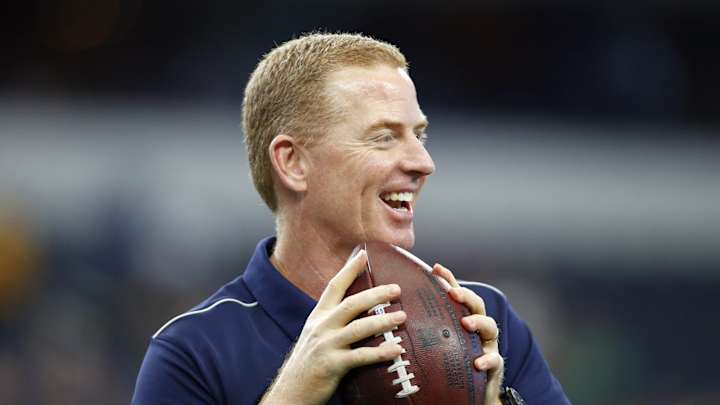What the Giants Offense Might Look Like Under Jason Garrett

Although the Giants, under new head coach Joe Judge, plan to be multiple on both sides of the ball, the team will have some basic concepts it deploys during games.
On offense, where the goal is to keep opponents guessing which player(s) are going to be featured in that week’s game plan, the team, under new offensive coordinator Jason Garrett, could incorporate principles from the “Air Coryell” offense.
Named after Don Coryell, the head coach of the San Diego Chargers during the 1978-86 seasons, Air Coryell is designed to spread out a defense vertically as opposed to horizontally, like the West Coast Offense.
It is an offense that relies on the speed of its receivers and the ability to separate. This is why the position is likely a more significant need in this year’s draft that some allow.
It is also a risky proposition in that it relies on building timing patterns into the offense where the quarterback must be able to time his throws to connect with a receiver at a designated spot within the route. If there is a single breakdown in the operation, the results can be disastrous. Dan Fouts, the quarterback who ran the system for the Chargers for Coryell, threw for 194 touchdowns but also had 148 interceptions over that period.
It’s also a system that will likely mean a lower completion percentage for the quarterback under center. But on the flip side, the success of the system can mean astronomical passing yardage in particular and a lot of chunk plays that fans love to see.
Do the Giants Have the Personnel?
The Giants have primarily been a West Coast Offense, a team that has relied more on shorter, safer passes with the hope of having a receiver break free for the big yardage.
This has not always been the case, though, because, as previously mentioned, a receiver needs to separate from defenders to pick up the chunk yardage, something the Giants receivers (outside of Odell Beckham Jr, when he was here and Darius Slayton) haven’t been able to do consistently.
This is why it would not be surprising to see the Giants add a speedy receiver to the mix.
The Quarterback
To run the Air Coryell principles, a team needs a cerebral quarterback with the prerequisite arm strength. These are two characteristics Jones brings to the table.
Another potential advantage of this system that fits what Jones does well is that most of the plays are run from the shotgun. But with that said, besides ball security, which is an area that Jones absolutely MUST improve in his second season, he also must expedite his ability to read of defenses. To be fair, just about every look he saw last year was new to him as the NFL defenses are far more complex than what he likely saw in college.
However, in Year 2, Jones cannot be averaging 2.7 seconds to make his reads and then throw the ball, not if the majority of his pass attempts are reliant on timing and him getting the ball to a spot where a receiver is anticipated to be.
The Offensive Line
As of this writing, the Giants have not been linked to an offensive line coach, but let’s hope whoever Joe Judge hires, they don’t skimp at this position because, for the Air Coryell, precision and technique are of the utmost importance for an offensive line.
Think about it. If the pass protection leaks like a sieve, the quarterback is likely either going to be sacked or forced to either dump off a pass underneath or throw it away, leaving the deeper stuff no chance to develop. Picking up stunts and exuding power blocking are of the utmost importance for the offensive line for this system to work with any consistency.
The Running Game
The threat of a deep passing game can be supported by a power running scheme, which the Giants have with Saquon Barkley.
If the Giants can generate any kind of consistency with the deep pass, Barkley, who last year faced a loaded box on 11.52% of his rushing attempts, should see fewer of these instances which could translate into eye-popping production from the third-year back.
Why? Because defenses will have to honor the deep ball, which means they can’t crowd the line of scrimmage on every single play. Give Barkley room to run, and he could make the production he generated in his first two NFL seasons look like nothing.
What about at Tight End?
I’ve argued that the Giants have yet to figure out how to get the most out of tight end Evan Engram’s skill set. Instead of splitting him out wide more or playing him in the slot, the last two coaching staffs have had him mostly operate from an inline position where at times he’s been asked to block players who are 20-30 pounds heavier than he is, or who have jammed him coming off the line.
Engram, I believe, would benefit from an Air Coryell system. Blessed with better than average speed, Engram should have little trouble running a variety of intermediate and deep routes that are staples of the Air Coryell system. Further, by having Engram go in motion, the Giants might improve getting the ideal matchup for their tight end and find more success in getting him out in s[ace where he could potentially be a significant asset to the passing game.
Final Thoughts
While I think elements of the Air Coryell offense would benefit this Giants team, the “multiple” looks that I believe Judge wants is going to be a mixture of elements from other systems to optimize the personnel they have.
Another approach that hopefully, Garrett will bring is less of a reliance on 11-personnel, which per Sharp Football Stats the Giants used on 74% of their snaps last season, the second-highest rate in the NFL (behind the Bengals, who ran that set 76% of the time (the Cowboys ran 11-personnel on 67% of their offensive plays).
While that is a smart set to use for running plays because it discourages the use of stacking the box, the Giants last year often played right into the hands of the defense because they passed the ball on almost three-quarters of their snaps in 11-personnel.
The Giants also need to mix up where they position the quarterback for running plays. Again, last year if the quarterback was in the shotgun, that usually screamed pass. But when the quarterback was under center, nine times out of 10, it was a running play that defenses were more often than not ready for.
As the NFL has evolved into a passing league where 11-personnel became a staple, defenses have adjusted by getting their slot cornerback onto the field more and more. This is where creativity and deploying different personnel groupings such as 10, 12, or 21 personnel, are going to be vital.
By taking a little bit from the various systems and by mixing up prior tendencies, which made the Giants offense predictable to guess, Garrett should be able to optimize the strengths of the Giants offensive personnel better.
